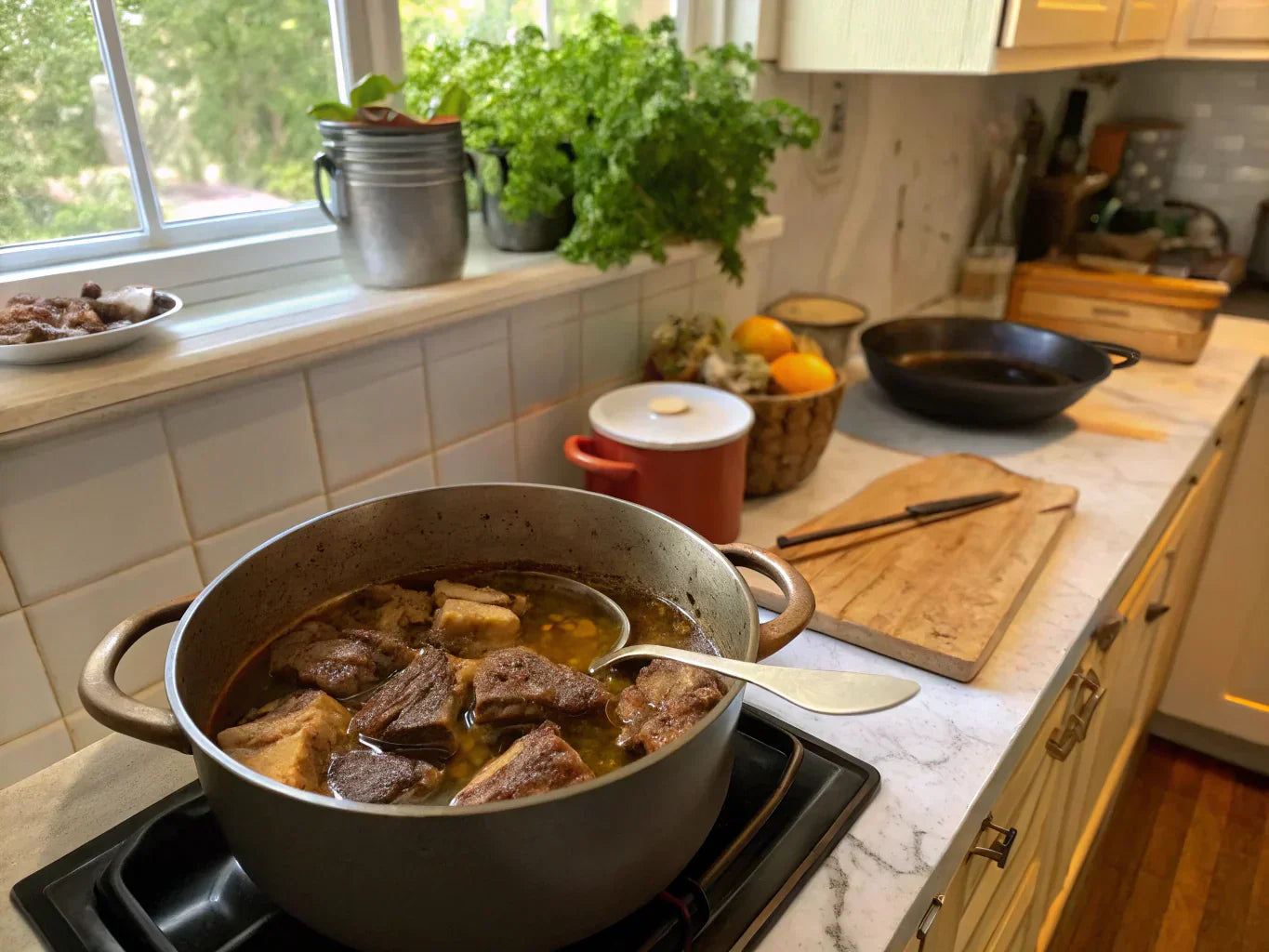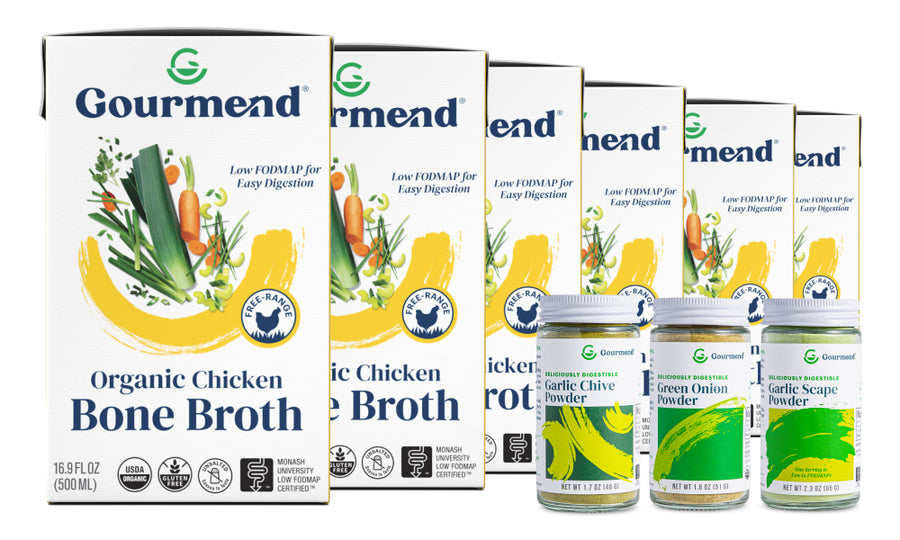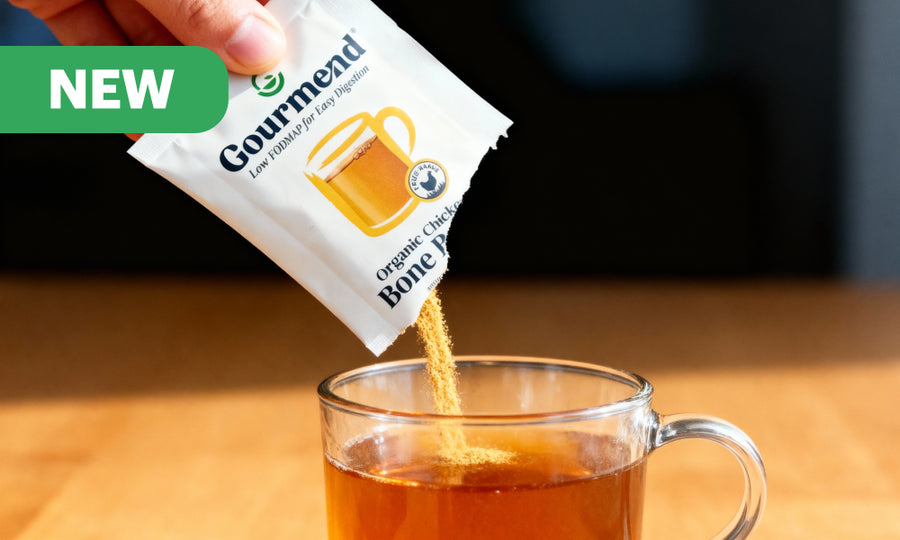Beef Stock Vs Beef Broth: 5 Key Differences Explained

Beef Stock vs Beef Broth: The Essential Differences
The difference between beef stock vs beef broth comes down to three key factors: cooking time, main ingredients, and intended use. Stock is made primarily from bones simmered for hours to extract collagen and create a rich, gelatinous base, while broth focuses on meat and vegetables for a lighter, more seasoned liquid that's ready to sip. Understanding these distinctions will transform how you approach cooking—and help you choose the right foundation for every dish.
Key Takeaways
- Beef stock is made primarily from bones simmered for hours to extract collagen and create a rich, gelatinous base.
- Beef broth is made from meat and vegetables, resulting in a lighter, more seasoned liquid.
- The main differences between beef stock and beef broth are cooking time, main ingredients, and intended use.
- Stock provides a richer foundation for dishes, while broth is ready to sip and can be consumed on its own.
- Understanding these distinctions helps in choosing the right base for different cooking needs.
Table of Contents
- Beef Stock vs Beef Broth: The Essential Differences
- What is Beef Stock?
- What is Beef Broth Explained
- Beef Stock vs Beef Bouillon: Understanding the Spectrum
- 5 Key Differences: Beef Stock vs Beef Broth
- The Bone Broth Revolution: Where Tradition Meets Wellness
- Choosing the Right Option for Your Kitchen
- Beef Stock vs Beef Bouillon: Understanding the Convenience Factor
- Storage and Shelf Life: Maximizing Your Investment
- Cost Considerations: Getting the Best Value
- Making Your Choice: Practical Recommendations
Walk into any grocery store and you'll face shelves lined with cartons labeled "stock," "broth," and "bone broth." The terms get tossed around interchangeably, leaving even experienced home cooks scratching their heads. But here's the thing: these aren't just marketing buzzwords. Each serves a distinct purpose in your kitchen, and knowing when to use which one can elevate your cooking from good to restaurant-quality.
We've spent years perfecting our understanding of these liquid foundations—not just as passionate cooks, but as founders of a company dedicated to creating gut-friendly, clean-label broths. Through countless hours of simmering, testing, and tasting, we've learned that the devil really is in the details when it comes to beef stock vs beef broth.
What is Beef Stock?

Beef stock is the workhorse of professional kitchens—a rich, gelatinous liquid made by slowly simmering beef bones for 6 to 8 hours or more. The magic happens when collagen from the bones breaks down into gelatin, creating that signature thick, almost jelly-like texture when cooled. This isn't just about consistency; it's about building layers of deep, savory flavor that can transform any dish.
The traditional approach starts with roasted beef bones—think marrow bones, knuckle bones, and meaty joints. These get tossed with aromatic vegetables and herbs, then covered with cold water and brought to the gentlest of simmers. The long, slow cooking process extracts every bit of flavor and nutrients from those bones, resulting in a liquid gold that's virtually unsalted and incredibly versatile.
What makes stock so valuable is its neutral flavor profile. Without added salt or heavy seasoning, it becomes the perfect canvas for building complex dishes. Whether you're deglazing a pan, making risotto, or creating a velvety sauce, stock provides body and richness without overwhelming other ingredients. For those looking for a convenient and gut-friendly option, Low FODMAP Organic Beef Broth offers the depth of homemade stock with the added benefit of being easy on digestion.
The Science Behind Stock Making
The extended cooking time isn't just tradition—it's science. Collagen, the protein that gives bones their structure, needs heat and time to break down into gelatin. This process typically takes 6 to 8 hours for beef bones, though some chefs push it even longer. The result is a liquid that coats the back of a spoon and sets up like Jell-O when refrigerated.
Temperature control is crucial here. A rolling boil will create a cloudy, less refined stock, while a gentle simmer produces that crystal-clear liquid prized by professional chefs. The key is maintaining just enough heat to see tiny bubbles breaking the surface—what the French call a "lazy bubble."
What is Beef Broth Explained
Beef broth takes a completely different approach. Instead of focusing on bones, broth starts with meat—chuck roast, beef shanks, or other flavorful cuts—along with vegetables and seasonings. The cooking time is much shorter, typically 2 to 3 hours, just enough to extract the meat's flavor without the extended collagen breakdown.
The result is a lighter, more immediately flavorful liquid that's often seasoned with salt and ready to drink straight from the pot. Think of it as the difference between a concentrated flavor base (stock) and a finished soup component (broth). Broth has personality right out of the gate—it's seasoned, balanced, and designed to be enjoyed on its own. If you're looking for a ready-to-sip option, try our Beef Broth Single Unit for a delicious and convenient solution.
This shorter cooking time and meat-forward approach creates a thinner consistency compared to stock. You won't get that gelatinous texture, but you will get a clean, savory flavor that works beautifully in lighter applications where you don't want to overpower delicate ingredients.
The Reality of Store-Bought Options
Here's where things get interesting in the commercial world. Many shelf-stable broths you'll find in stores are actually closer to what we'd traditionally call stock—they're made with bones and simmered for extended periods. At Gourmend Foods, our "broth" is actually bone broth, made by simmering organic beef bones for hours to create that rich, collagen-packed liquid that's both flavorful and gentle on digestion.
We use the green parts of scallions and leeks instead of onions, plus nori seaweed and oyster mushrooms for natural umami. No vinegar, no artificial flavors, no shortcuts—just clean, organic ingredients that create incredible depth of flavor while remaining low FODMAP certified for sensitive digestive systems. For those who want to explore a variety of flavors, our Bone Broth Sampler Bundle is a great way to discover your favorites.
Beef Stock vs Beef Bouillon: Understanding the Spectrum

If stock and broth represent two ends of a spectrum, bouillon sits in its own category entirely. Bouillon—whether in cube, powder, or paste form—is essentially dehydrated broth or stock concentrate. It's designed for convenience, allowing you to reconstitute a flavorful liquid by simply adding hot water.
The trade-off with most commercial bouillons is ingredient quality. Many contain high levels of sodium, artificial flavors, and preservatives that can trigger digestive discomfort. They're convenient, sure, but they lack the rich mouthfeel and clean flavor profile of properly made stock or broth.
For home cooks dealing with food sensitivities or anyone committed to clean eating, the choice becomes clear: invest in high-quality, shelf-stable broths that deliver both convenience and integrity. Look for products made with organic ingredients, no artificial additives, and transparent labeling that tells you exactly what's in each carton. If you want to try a variety of broths, our Broth Sampler offers a convenient way to sample different options.
5 Key Differences: Beef Stock vs Beef Broth
Now that we've covered the basics, let's break down the five crucial differences that separate beef stock vs beef broth. These distinctions will help you choose the right liquid foundation for every cooking situation—and understand why professional chefs are so particular about which one they reach for.
1. Primary Ingredient Focus
The most fundamental difference lies in what goes into the pot first. Stock builds its foundation on bones—specifically, collagen-rich bones like knuckle bones, marrow bones, and meaty joints. These bones are often roasted first to develop deeper flavor through the Maillard reaction, creating those beautiful caramelized notes that define great stock.
Broth, on the other hand, starts with actual meat. Chuck roast, beef shanks, short ribs—cuts that have plenty of connective tissue and fat to render flavor quickly. While some broth recipes include bones, the meat is the star of the show, providing immediate flavor payoff without the extended cooking time.
2. Cooking Time and Temperature
Here's where patience becomes a virtue—or a luxury you don't have. Stock demands time, typically 6 to 8 hours of gentle simmering, sometimes even longer. This extended cooking period allows collagen to fully break down into gelatin, creating that signature body and mouthfeel that makes stock so valuable in professional kitchens.
Broth works on a completely different timeline. Two to three hours is usually sufficient to extract the meat's flavor and create a well-balanced liquid. This shorter cooking time makes broth more accessible for weeknight cooking, when you want homemade flavor without the day-long commitment.
3. Texture and Consistency
The texture difference between stock and broth is immediately apparent when you chill them overnight. Properly made stock will set up like firm Jell-O, thanks to all that extracted gelatin. This gelatinous quality isn't just for show—it translates to incredible body and richness when the stock is reheated and used in cooking.
Broth remains relatively thin even when chilled, with perhaps a slight thickening but nothing like stock's dramatic transformation. This lighter consistency makes broth perfect for sipping or using in applications where you want flavor without heaviness.
4. Flavor Profile and Seasoning
Stock is intentionally under-seasoned or completely unsalted, designed to be a blank canvas for building flavors. This neutral approach allows you to control the final seasoning in whatever dish you're creating. Think of stock as your flavor foundation—it provides depth and richness without dictating the final taste profile.
Broth comes pre-seasoned and ready to enjoy on its own. Salt, herbs, and spices are added during the cooking process to create a balanced, immediately satisfying liquid. This makes broth perfect for light soups, sipping, or any application where you want instant flavor gratification.
5. Culinary Applications and Uses
The intended use often determines which option makes sense for your cooking. Stock excels as a building block—it's what you reach for when making pan sauces, risottos, braises, or any dish where you want to add body and depth without overwhelming other flavors. Its neutral profile and rich texture make it invaluable for techniques like deglazing or reducing. For a delicious risotto recipe that makes the most of quality stock, check out our Simple Low FODMAP Gourmet Risotto blog post.
Broth shines in lighter applications and as a finished product. It's perfect for clear soups, cooking grains, or enjoying as a warming beverage. Many of our customers at Gourmend Foods drink our bone broth straight from a mug, especially during colder months or when they need something nourishing and easy to digest.
The Bone Broth Revolution: Where Tradition Meets Wellness

Enter bone broth—the category that's created the most confusion in recent years. Technically, bone broth is a type of stock that's been simmered for even longer periods, sometimes 24 to 48 hours, to maximize collagen extraction and nutrient density. But the marketing around bone broth has positioned it as something entirely different: a wellness beverage packed with gut-healing properties. For more on the health benefits of bone broth, you can read this authoritative overview on bone broth benefits.
At Gourmend Foods, our beef and chicken products are actually bone broths, despite the "broth" name on the label. We simmer organic beef bones for extended periods to create that rich, gelatinous texture while keeping the flavor clean and accessible. The difference is in our approach to seasoning and ingredients—we use gut-friendly alternatives like the green parts of leeks and scallions instead of onions, creating a product that's both flavorful and gentle on sensitive digestive systems.
This longer cooking time extracts more minerals, collagen, and amino acids from the bones, which is why bone broth has gained popularity in wellness circles. While we can't make medical claims, many of our customers report that our bone broths are easier to digest than traditional stocks or broths, thanks to our low FODMAP certification and clean ingredient list.
Choosing the Right Option for Your Kitchen
The choice between beef stock vs beef broth ultimately comes down to your cooking goals and time constraints. If you're building complex flavors and have the time for extended simmering, homemade stock will give you unparalleled control and quality. For quicker applications or when you want something ready to drink, broth makes perfect sense.
For those dealing with digestive sensitivities or anyone committed to clean eating, the quality of your liquid foundation becomes even more critical. Look for products made with organic ingredients, no artificial additives, and transparent sourcing. At Gourmend Foods, we've eliminated common trigger ingredients like onion and garlic bulbs, replacing them with flavorful, gut-friendly alternatives that don't compromise on taste. If you're interested in a curated selection for your pantry, our Gourmend Sampler is a great way to stock up on essentials.
The beauty of understanding these differences is that it opens up new possibilities in your cooking. Once you know when to reach for stock versus broth, you'll start noticing how each one can elevate different dishes in unique ways—transforming your kitchen skills and bringing restaurant-quality depth to your home cooking. For more inspiration, browse our Low FODMAP Recipes for creative ways to use broth and stock in everyday meals.
Beef Stock vs Beef Bouillon: Understanding the Convenience Factor
beef stock vs beef bouillon" src="https://cdn.shopify.com/s/files/1/0255/1247/6771/t/12/assets/1749806597320-beef-stock-vs-beef-bouillon-1749806596971.webp?v=1749806598" style="width: auto; max-width: 100%; height: auto; max-height: 500px; display: block; margin-left: auto; margin-right: auto;">
While we've focused on liquid options, it's worth addressing beef stock vs beef bouillon—another comparison that often comes up in home kitchens. Bouillon cubes, pastes, and powders are essentially dehydrated versions of broth or stock, designed for convenience and long shelf life. However, they typically contain high levels of sodium, artificial flavors, and preservatives that can trigger digestive issues for sensitive individuals. For more on how sodium and additives can impact health, see this CDC resource on sodium in processed foods.
The flavor profile of bouillon tends to be one-dimensional compared to properly made stock or broth. While bouillon can work in a pinch for adding quick umami to dishes, it lacks the body, richness, and clean ingredient profile that make fresh or high-quality packaged options so valuable. For anyone following a low FODMAP diet or dealing with IBS symptoms, bouillon products often contain onion and garlic powder—common triggers that can cause digestive distress.
When you're short on time but don't want to compromise on quality or digestive comfort, shelf-stable bone broths offer the best of both worlds. They provide the convenience of bouillon with the nutritional benefits and clean ingredients of homemade stock, without the hidden additives that can upset sensitive stomachs.
Storage and Shelf Life: Maximizing Your Investment
Proper storage makes all the difference in getting the most from your beef stock vs beef broth decision. Homemade stock and broth will keep in the refrigerator for up to one week, but freezing extends their life significantly. Stock freezes beautifully for up to six months, and its gelatinous texture actually helps prevent freezer burn better than thinner broths.
For freezing, consider portioning your stock or broth into ice cube trays or small containers. This allows you to thaw exactly what you need for a recipe without waste. Many home cooks freeze stock in both small portions for deglazing pans and larger quantities for soup bases—a strategy that transforms weeknight cooking efficiency.
High-quality shelf-stable options eliminate storage concerns entirely while maintaining nutritional benefits. Look for products in BPA-free packaging with minimal processing. The convenience factor becomes especially valuable for busy households where meal planning consistency matters more than having fresh stock on hand at all times.
Cost Considerations: Getting the Best Value
From a budget perspective, homemade stock offers excellent value since you're using bones that are often less expensive than prime cuts of meat. Many butchers will sell soup bones at reasonable prices, and you can save bones from previous meals to build your stock supply. The time investment is significant, but the yield and quality often justify the effort for dedicated home cooks.
Broth typically costs more to make at home since it requires actual meat rather than just bones. However, the shorter cooking time means less energy usage and faster turnaround. For families cooking multiple meals per week, this time efficiency can translate to real value in terms of meal planning flexibility.
Premium packaged options represent a middle ground—higher upfront cost but significant time savings and consistent quality. When you factor in the cost of ingredients, energy for extended cooking, and your time, quality packaged bone broths often provide excellent value for busy households prioritizing both health and convenience.
Making Your Choice: Practical Recommendations
Understanding beef stock vs beef broth empowers you to make informed decisions based on your specific cooking needs, dietary requirements, and lifestyle constraints. For maximum flexibility, consider keeping both options in your kitchen arsenal—homemade or high-quality stock for building complex dishes, and ready-to-use broth for quick meals and sipping.
If digestive health is a priority, focus on products with clean ingredient lists and low FODMAP certification. The difference in how you feel after eating can be just as important as how the food tastes, especially for the millions of Americans dealing with IBS and digestive sensitivities. Quality ingredients and thoughtful preparation methods can transform not just your cooking, but your overall relationship with food and eating confidence. For more tips on eating well with sensitivities, visit our FODMAP blog for expert advice and resources.
Check out our Low Fodmap Organic Beef Broth
Frequently Asked Questions
Can I substitute beef broth for beef stock?
Yes, you can substitute beef broth for beef stock in most recipes, although the flavor and richness might differ slightly. Broth is typically lighter and seasoned, while stock is richer and made with bones, so your dish may have a less intense depth of flavor. Adjust seasoning as needed to compensate for the difference.
What is better, beef stock or beef broth?
Whether beef stock or beef broth is better depends on your cooking needs. Beef stock, made by simmering bones, offers a richer, gelatinous texture ideal for sauces and stews, while beef broth, made primarily from meat and vegetables, is lighter and ready to enjoy as a soup base. Choose stock for depth and body, and broth for a more delicate flavor.
Can you drink stock like broth?
Yes, you can drink stock like broth, especially if it’s well-seasoned and flavorful. However, because stock is more concentrated and gelatinous, some people prefer it as a cooking ingredient rather than a sipping liquid. Adding herbs, salt, or other flavorings can make drinking stock more enjoyable.
Which is healthier stock or broth?
Both stock and broth offer health benefits, but stock is often considered more nutritious due to its collagen, minerals, and amino acids extracted from bones during long simmering. Broth tends to be lower in calories and fat, making it lighter. Ultimately, the healthiest choice depends on your dietary needs and how each is prepared.
Can I use beef stock instead of beef broth in chili?
Absolutely, beef stock can be used instead of beef broth in chili and will provide a richer, more robust flavor. Since stock is thicker and more concentrated, it can enhance the depth of your chili. Just be mindful of seasoning, as stock may be less salty than broth.
Which is better for gravy, beef stock or beef broth?
Beef stock is generally better for making gravy because its gelatin content helps create a thicker, smoother texture. The rich flavor from the bones also adds depth to the gravy, making it more savory and satisfying. Broth can be used in a pinch, but you might need to thicken it more and boost the flavor.





